Finders-in-the-field: Crag Martin, Chesterfield, Derbyshire, Nov 2015
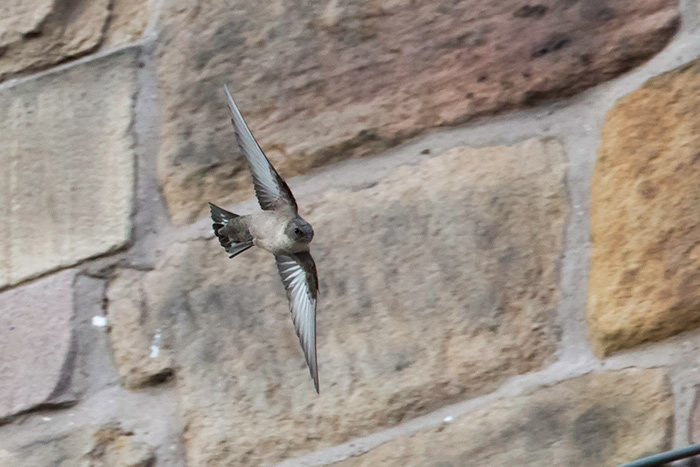
As a keen visible migration watcher, I was up well before dawn on Sunday, 8th November 2015, intending to carry out a watch from a regular viewing spot on the fringe of Derbyshire’s Eastern Moors. However, poor visibility and strong winds bedevil such activity and a look out of the door confirmed that this morning had both, so I had an extra tea and read the papers. An hour later at 07.15 hours there was just the faintest glimmer of brightness in the south-eastern sky so I headed for the hills.
Optimism soon vanished, however, as thick damp fog shrouded all high ground, with visibility down to 200m in places. I gave it an hour and then drove downhill to a much lower site a few km south-west of Chesterfield, where the visibility was much better. A couple of hours’ viewing produced pretty mediocre results, though, with a few hundred each Redwings, Fieldfares and Starlings, a smattering of finches and 8000 Woodpigeons all battling in a force 5-6 SW wind.
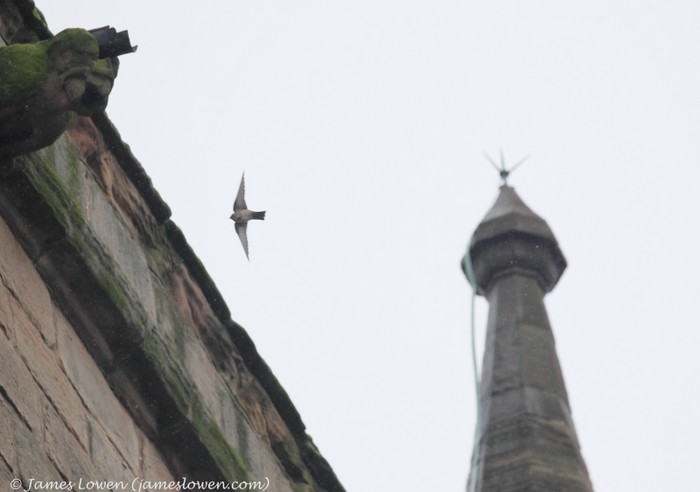
In the late morning I cut my losses, hoping for more classic conditions on another day but before returning home I went to a farmland area just north of Chesterfield, where a friend had seen a four-figure flock of Linnets and a Lapland Bunting in stubbles a few weeks earlier. Predictably, the fields had long been ploughed and were already sprouting next year’s cereals. So I headed for home [and breakfast] via Chesterfield. Often when driving through the town I call in at one of the town centre car parks to look for Peregrines on the spire of St Mary’s and All Saints Church, a site known to all as the Crooked Spire and a prominent local landmark.
As it was Remembrance Sunday, I assumed that the car parks would be rather full, so instead I stopped on the by-pass about 700m away and scanned. I could not see any Peregrines but to my surprise there was a hirundine flying around the spire. I guessed that this would be a late House Martin but, on swapping the bins for a scope, could not make out any colour and it looked rather chunky. This was at about 11.40 hours but it took me some time to drive into the town and park up.
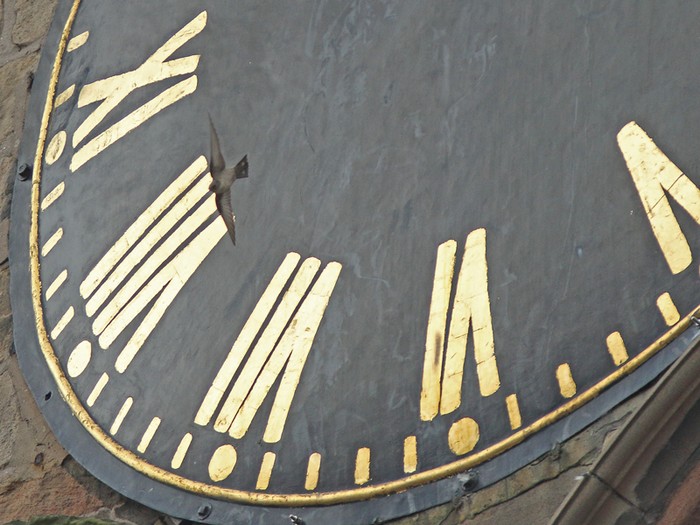
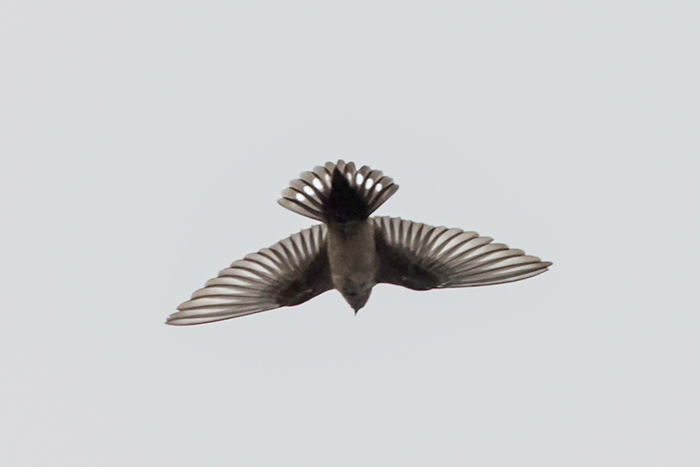
Fortunately , the bird was still present, flying around at some height. Its unpredictable mode of flight made it difficult to get onto, but two or three glimpses of its uniformly pale sandy-grey underparts immediately ruled out any of the British-breeding hirundines. I phoned Mick Taylor, Kevin Gould and Mike Lacey, all of whom live in Chesterfield. Thankfully, all were at home and arrived in the next 20 minutes or so.
We subsequently all had views of the bird’s upperparts as well as its underparts and the distinctive tail-pattern was well-seen. There was no doubt it was a Crag Martin, a species we all knew from European trips.
The news was put out widely and the first birder to respond was Mark Pass. For all of this time a Kestrel had been watching events below from a small recess near the top of the spire. A Peregrine then arrived, showing some interest in the Crag Martin before dislodging the Kestrel on the spire. Only the five of us had seen it when around 12.40 the martin disappeared, to the great disappointment of the growing crowd of birders, but it re-appeared around 13.30 and remained in view until 13.50. Later arrivers therefore missed it but it was seen again on 9th, remaining in view on and off until about 14.00.
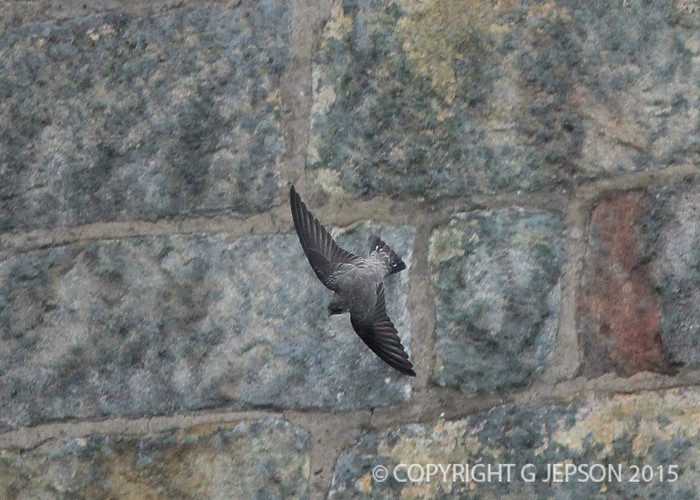
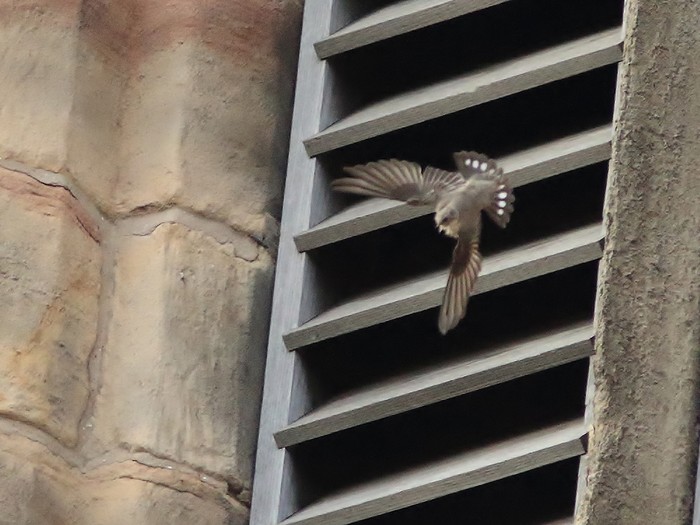
The bird was difficult to watch for any length of time on account of its fast and erratic flight, with sudden swoops and changes of direction. It was usually at some height, roughly level with the base of the spire. Despite it being a dull and occasionally showery day, it was very mild and the bird was clearly taking insects.
It was best seen when it flew close to the church walls, showing greyish-brown upperparts with rather darker flight feathers. The underparts were paler than the upperparts, with a pale underwing and much darker underwing coverts. The wings were long but broad-based, giving it a more thick-set outline than the regular hirundines. The tail was quite short and lacked streamers. When closed it looked slightly concave-ended but when it was fanned it looked rounded and the rows of spots near the tail tip were easily seen.
Needless to say, this constitutes a first Derbyshire record.
Roy Frost
10 November 2015
Write for Rare Bird Alert
Do you have a birding story you would like to share? From foreign birding trips to your local patch, finders accounts and more, we would love to hear from you.
All our articles are free for anyone to view and we include them in our weekly newsletter which goes out to thousands of birders every Wednesday. We also share them on our Twitter and Facebook pages, making sure your article will get read by as many people as possible.
If you would like to write an article please for us please get in touch with your ideas, thank you.
The RBA team






